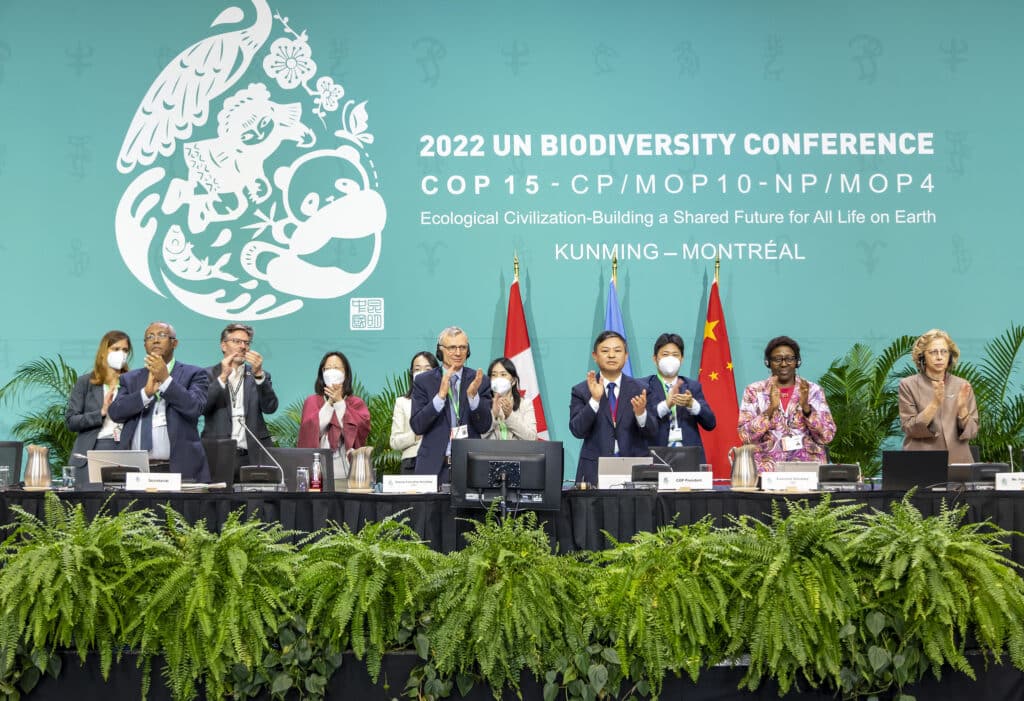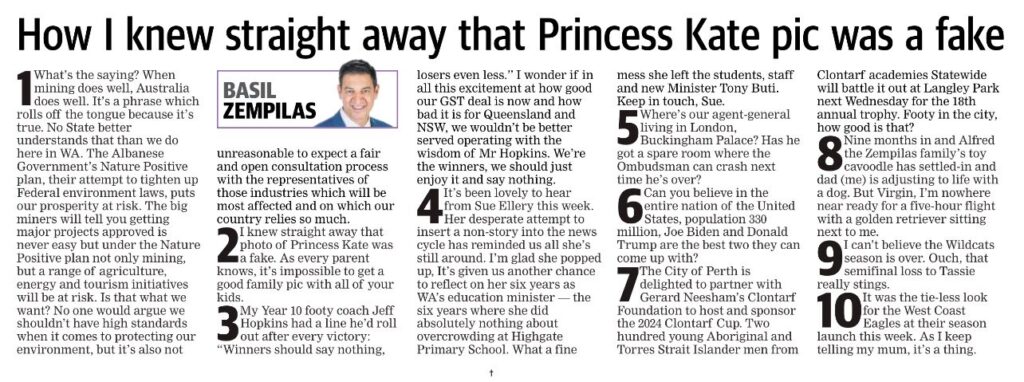Last year’s COP 28 might have been a fight over the cessation of fossil fuel, but a new hidden paper on the WWF website shows that the COP 15 Biodiversity Drive is alive and threatening personal property, jobs, and industry.
As reported by Wood Central in November, the Australian Government signed the “30 x 30” target at COP15 in December 2022, committing to ensure that 30% of the earth’s land and sea is protected through the establishment of protected areas (PAs) and other area-based conservation measures (OECMs).
Last week, Wood Central exclusively revealed that the industry has until early April to submit to the Australian Government to determine how the 30 x 30 target will fit within the Nature Positive Law, which the Albanese government is set to roll out later this year.
However, an estimate of the cost, should the WWF suggestions be followed, suggests upwards of $9B per annum will be needed to be spent, with considerable hardship to some regional areas, including housing/construction, agriculture, and the hardwood industries.

The Australian consumer will see the outcome of further price increases.
The Hon Tania Plibersek MP, Minister for the Environment and Water, during her National Press Club speech on 19 July 2022, said:
“Our government will set a goal of protecting 30% of our land and 30% of our oceans by 2030.”
Tania Plibersek, Minister for Environment and Water.
The statement follows the policy commitments by the Coalition and Labor to the global High Ambition Coalition for Nature and People, which aims to protect 30% of land and seas by 2030.
The WWF has urged the Australian Government to set up a $5B Green Fund to acquire forests, productive land, and reforest wheat fields. The land needed to meet the 30:30 objective must have a “high biodiversity value”, according to the Global Biodiversity Framework.
The WWF proposal is set out in its report, “Protecting Australia’s Nature—Pathways to protecting 30% of land by 2030 ” which the Wood Central publisher analysed last year.
If implemented, the report would see the closure of the NSW Hardwood industry – this would mean closing businesses, schools, and townships in due course (like in Victoria and Western Australia before).
The independently estimated cost to the NSW economy, according to management consultancy EY, would be:
- $2.9B in gross revenue,
- $1.1 billion in gross value-add, and
- 8,900 full-time employees or equivalent (otherwise known as FTEs)

Whilst the estimated value of the loss of agriculture in NSW could be between $5 billion and $8 billion!
In addition, more productive lands would still be needed to make up the gap!
NSW is Australia’s largest consumer market, home to a skilled workforce, advanced infrastructure, world-leading technology, and innovation. In addition, it has the highest-value agricultural land in the country.
According to the WWF Report, more than 6,000 privately owned properties across Australia must still be reclaimed, and more than 10 million hectares of additional land must be acquired to reach the target. Still, barriers at all levels of government make acquisitions difficult.
The report makes for interesting reading, as it discloses, for the first time, the project’s objectives and the impact on regional economies and Australia’s forestry and agricultural sector:
- In addition to the 24% protected already, WWF understands that a further 3% of land area – around 23 million hectares – will likely be added in the coming months as more Indigenous Protected Areas are declared. If this happens, the NRS will expand to cover approximately 27% of the land area. That would mean at least 23 million hectares – or 3% of land area – equivalent to the State of Victoria (22 million hectares) – would need to be added within the next eight years to reach the 30% target.
- Dr Taylor’s analyses, which used CAPAD 2020 data, determined that 41% of Australia’s 89 bioregions on land had less than 10% protected within the NRS.
- Achieving a high-ambition scenario will not occur without innovation, support from farmers and graziers, hand back to Indigenous communities, bold new partnerships, and major conservation financing from the public and private sectors, including carbon and biodiversity markets.
- WWF proposes a high-ambition pathway to 30% made up of five complementary approaches: Indigenous Protected Areas (likely the major contributor), Indigenous land buyback grants (e.g., to create new co-managed National Parks or freehold Indigenous lands managed for conservation), general land purchase grants (e.g., to create new National Parks or private wildlife sanctuaries), state land protection support (e.g., to phase out native forest logging and transfer to protected areas) and nature-friendly farm covenants (a great opportunity).
- In NSW, 7.6 million hectares of land occur in the NRS, equivalent to 9.6% of the total land area. Moreover, over 60% of ecosystems have less than 15% of their area protected.
- Achieving significant progress towards protecting 30% of NSW would require a substantial expansion of legal protection and revegetation and rewilding of millions of hectares of long-cleared lands in the sheep/wheat belt.
- Completing the transition from native forest logging could secure an additional two million hectares of public native forests. Transfer of Crown lands, including large areas of travelling stock routes with high conservation values, to the National Parks & Wildlife Service or Indigenous communities for conservation management would contribute significantly to the 30% target. Supporting First Nations to voluntarily declare additional Indigenous Protected Areas could play a key role.
Already, the mining industry has flagged concerns with the new laws, leading TV personality, Perth Lord Mayor and rising WA Liberal powerbroker Basil Zemplias to write an op-ed in the West Australian – in defence of the mining industry – criticising the Federal Government’s new Green Laws.

“What’s the old saying? When mining does well, Australia does well,” Mayor Zemplias said, adding that “the Albanese Government’s Nature Positive plan, their attempt to tighten Federal environmental laws, put our prosperity at risk.”
Who will represent Australia’s regional communities, which rely on the country’s $28 billion sustainable forest management industry to put bread on the table?
- Wood Central is a neutral platform and will not take an editorial stance on the Nature Positive Act. However, in the matter of public interest, it will post opinion articles and invite subject matter experts from all sides to provide contributors, who will be fact-checked before publication.





